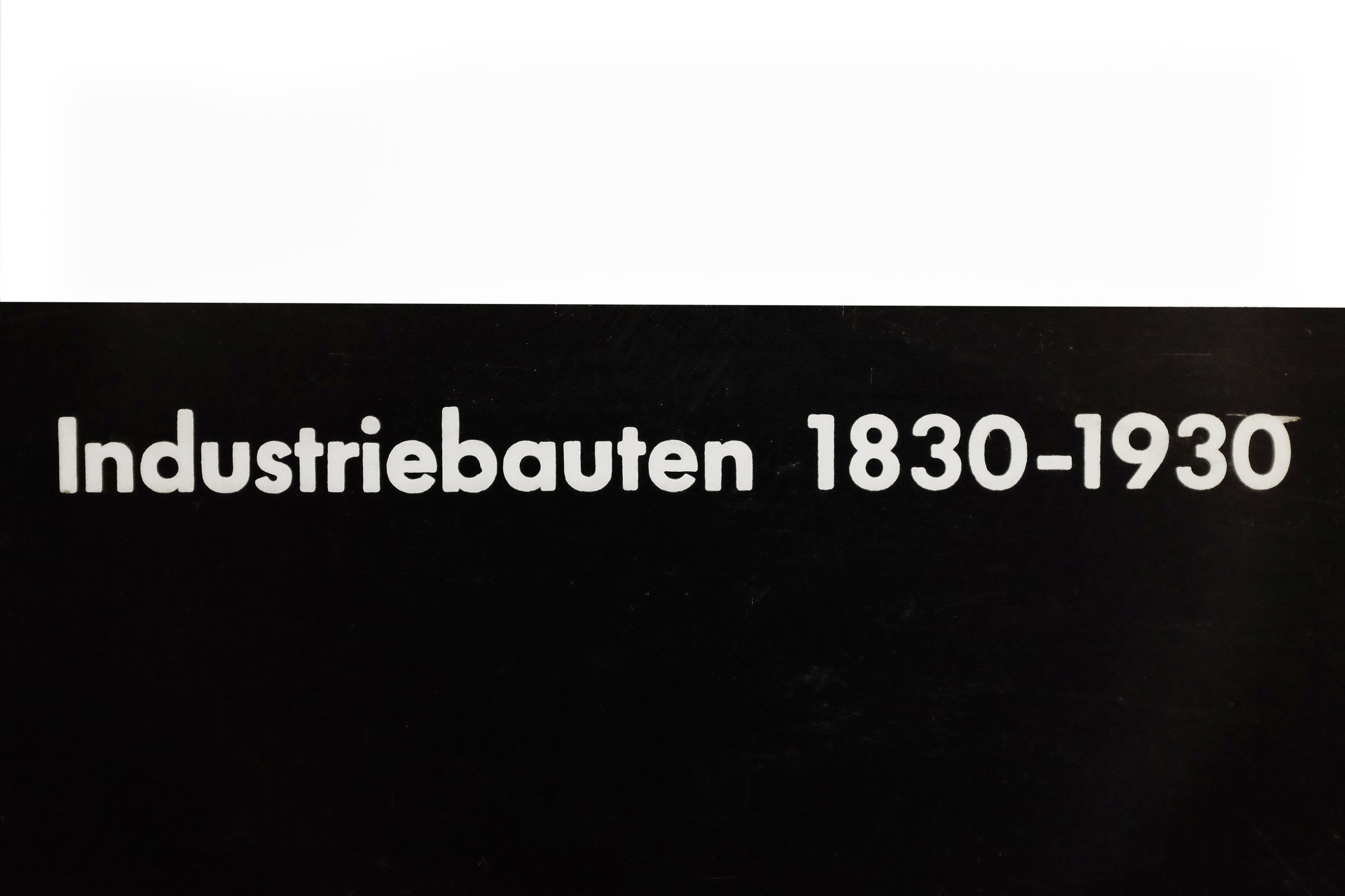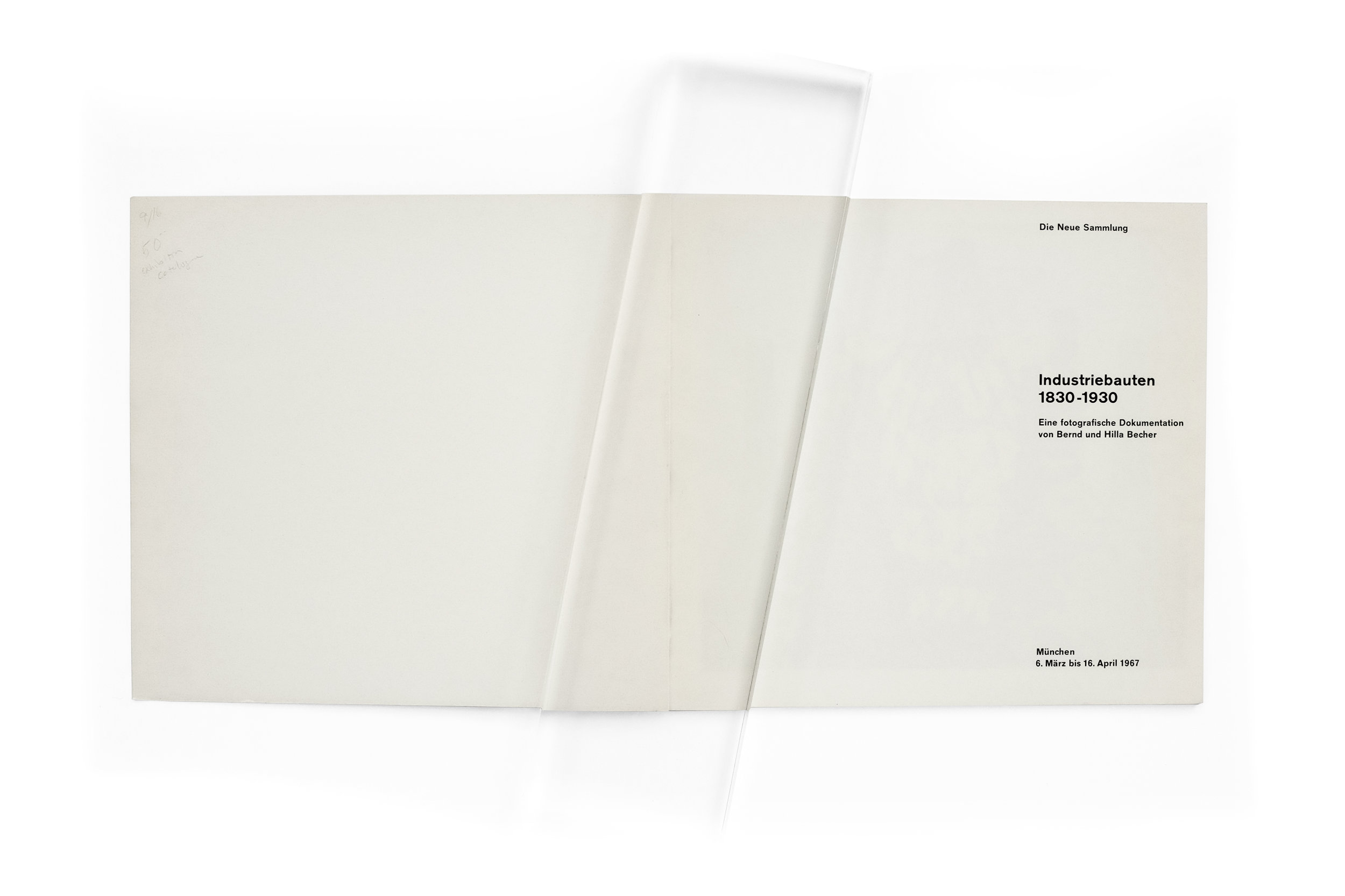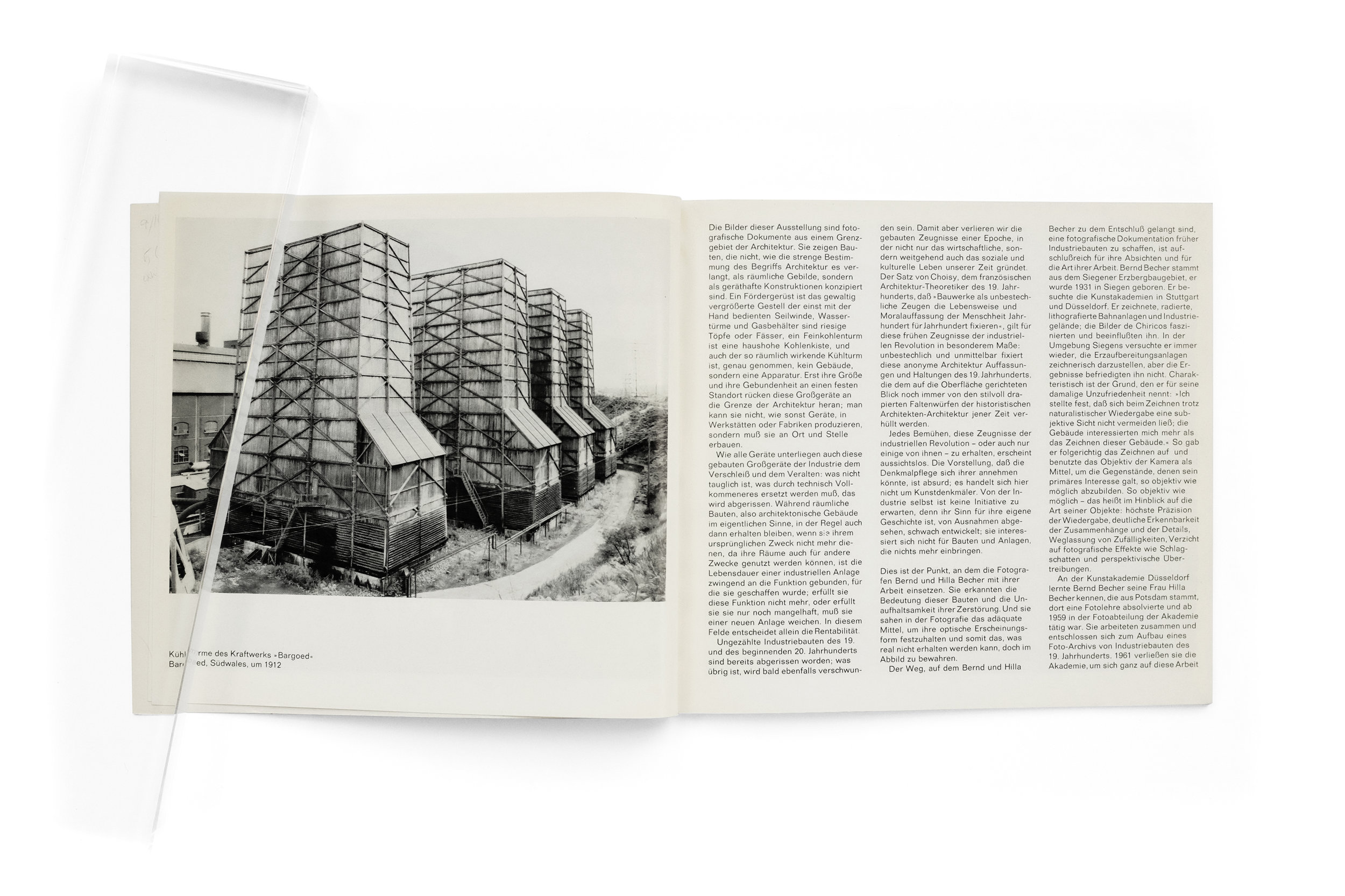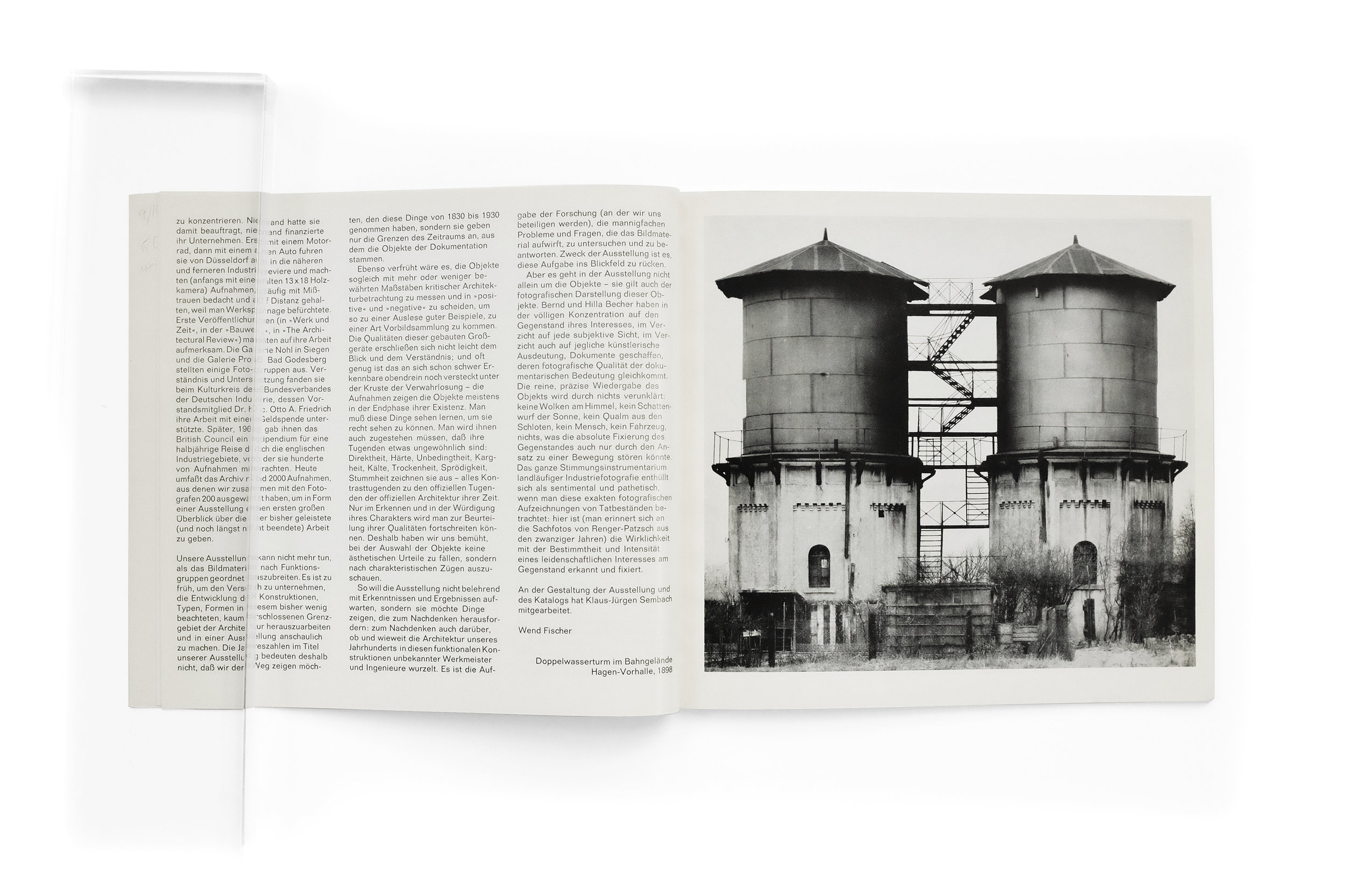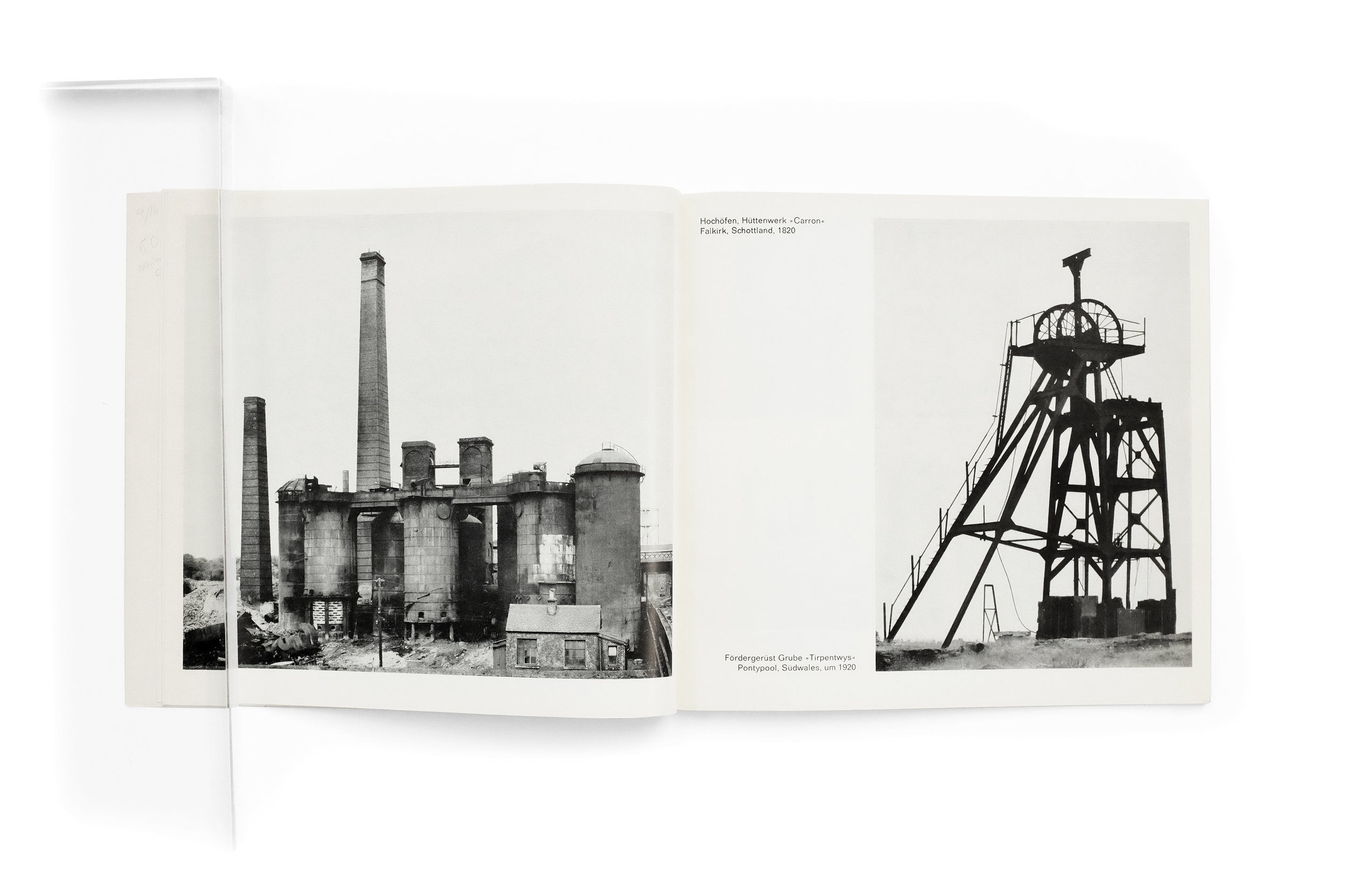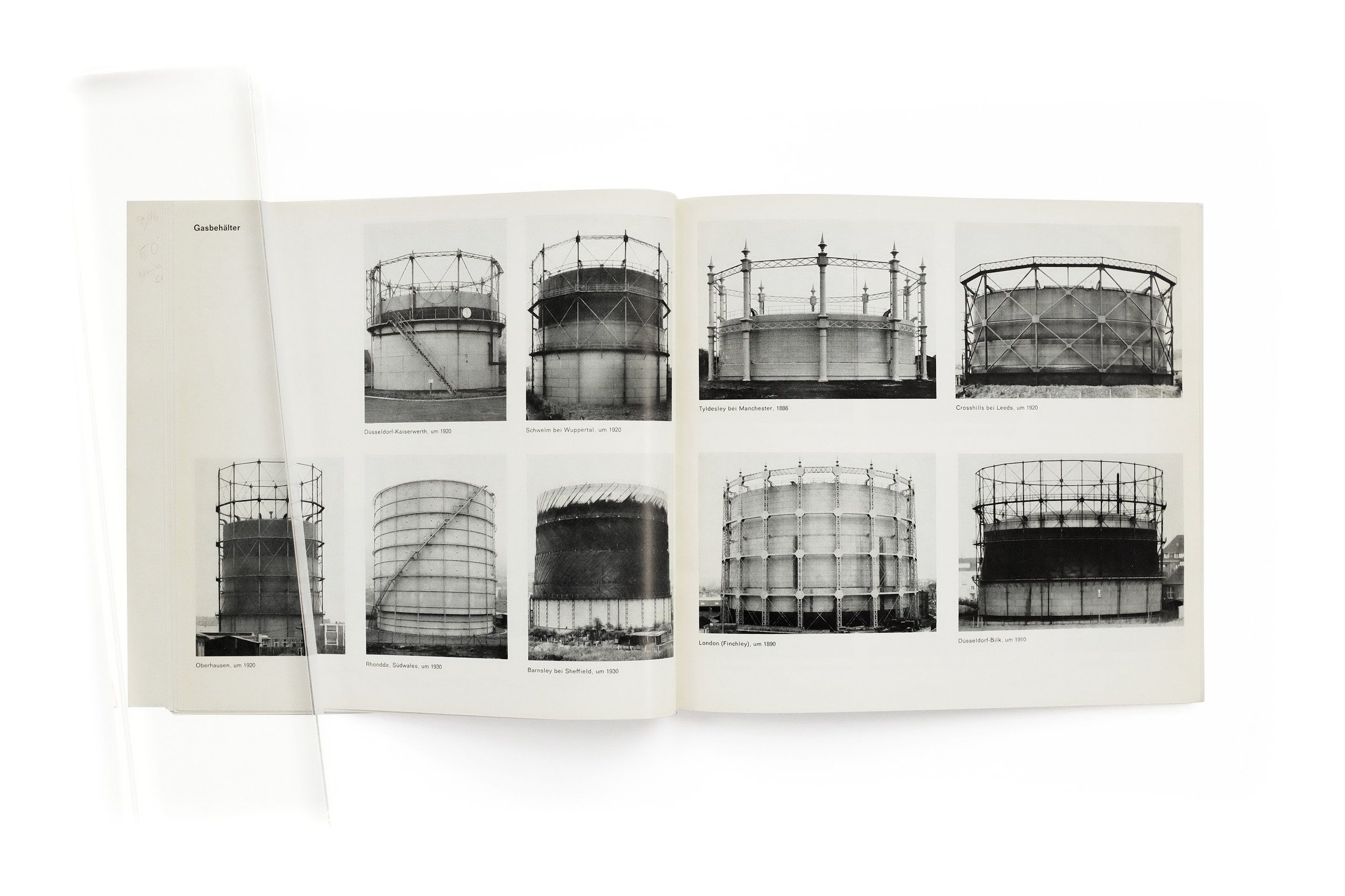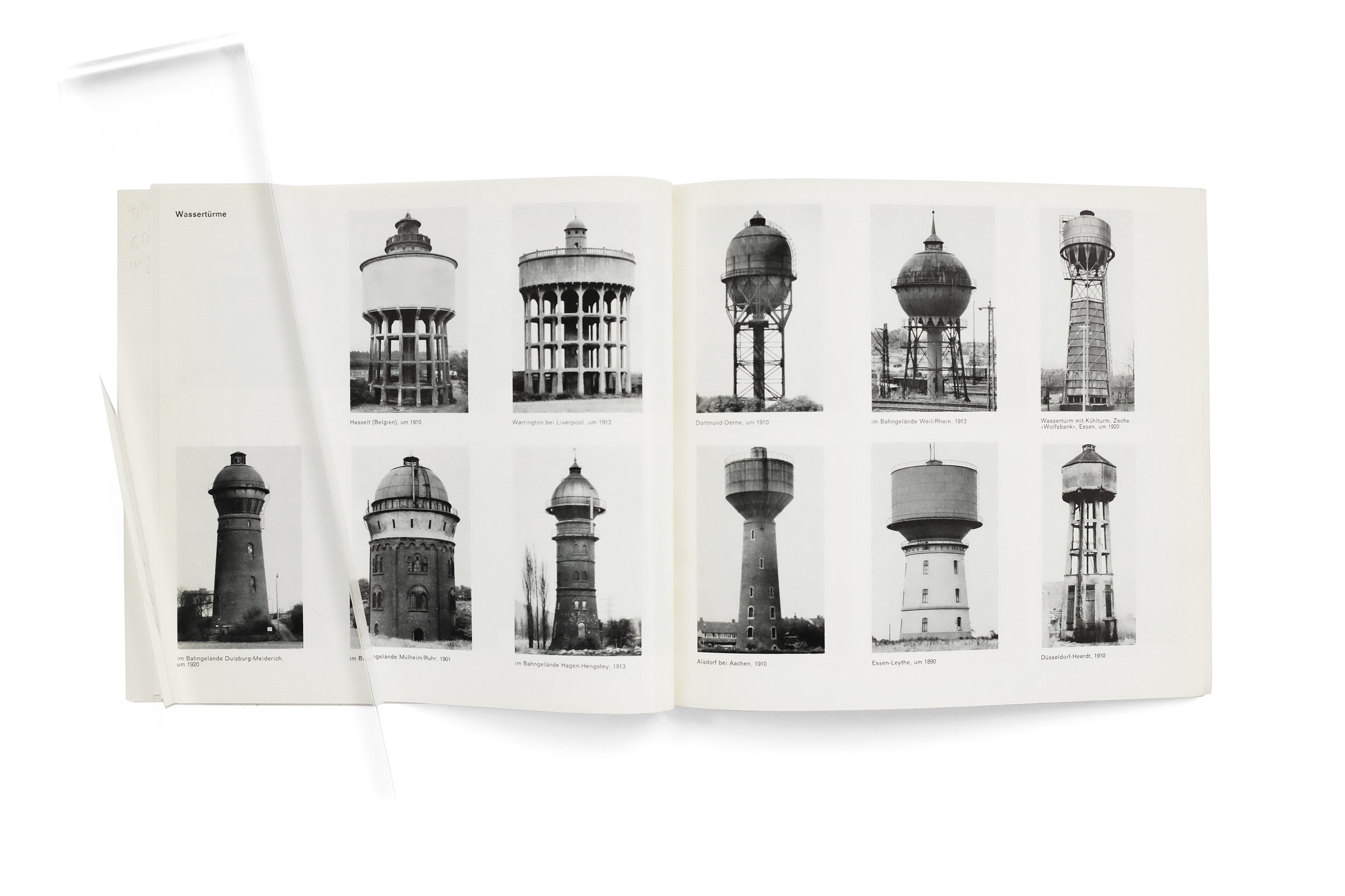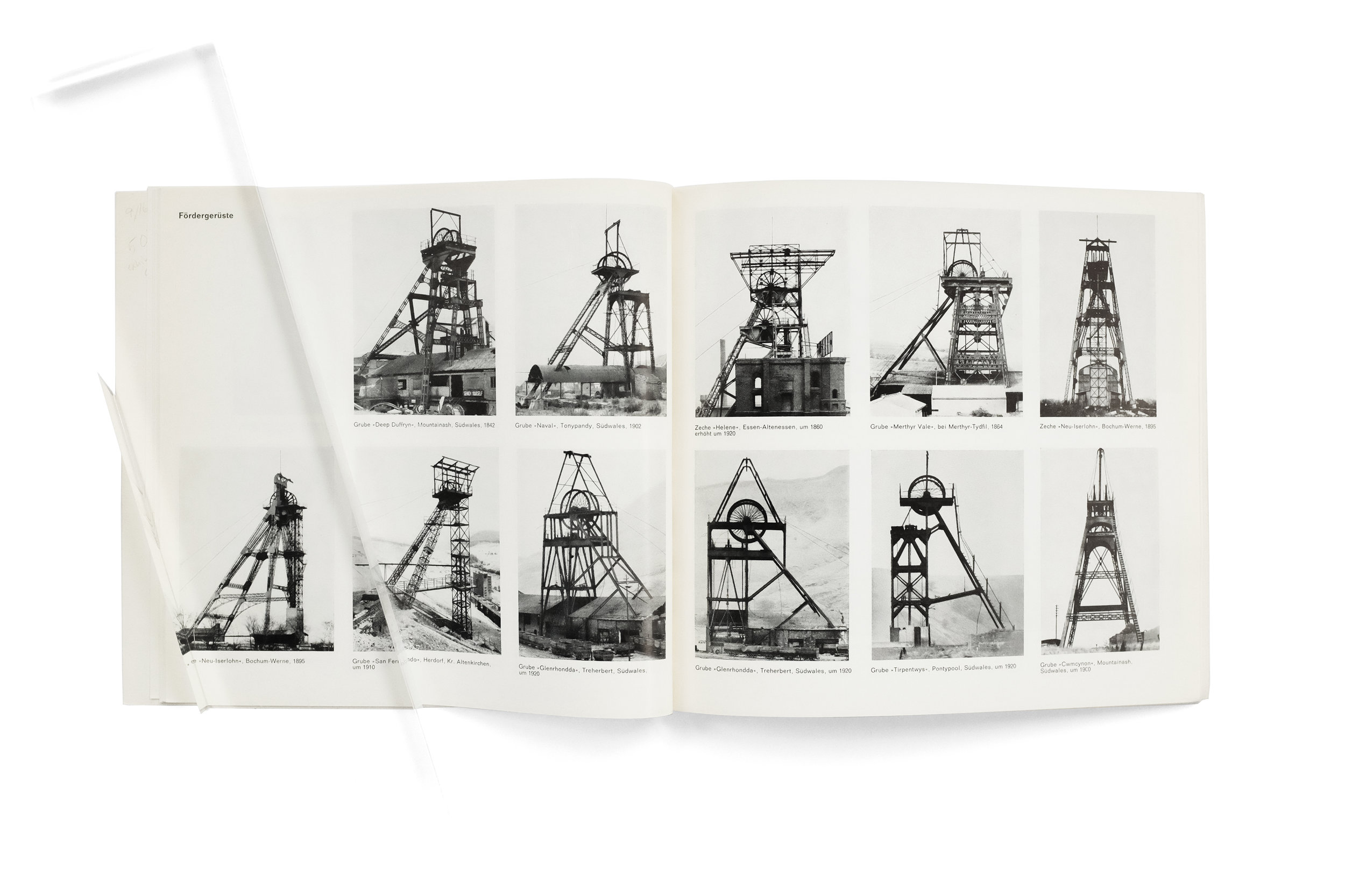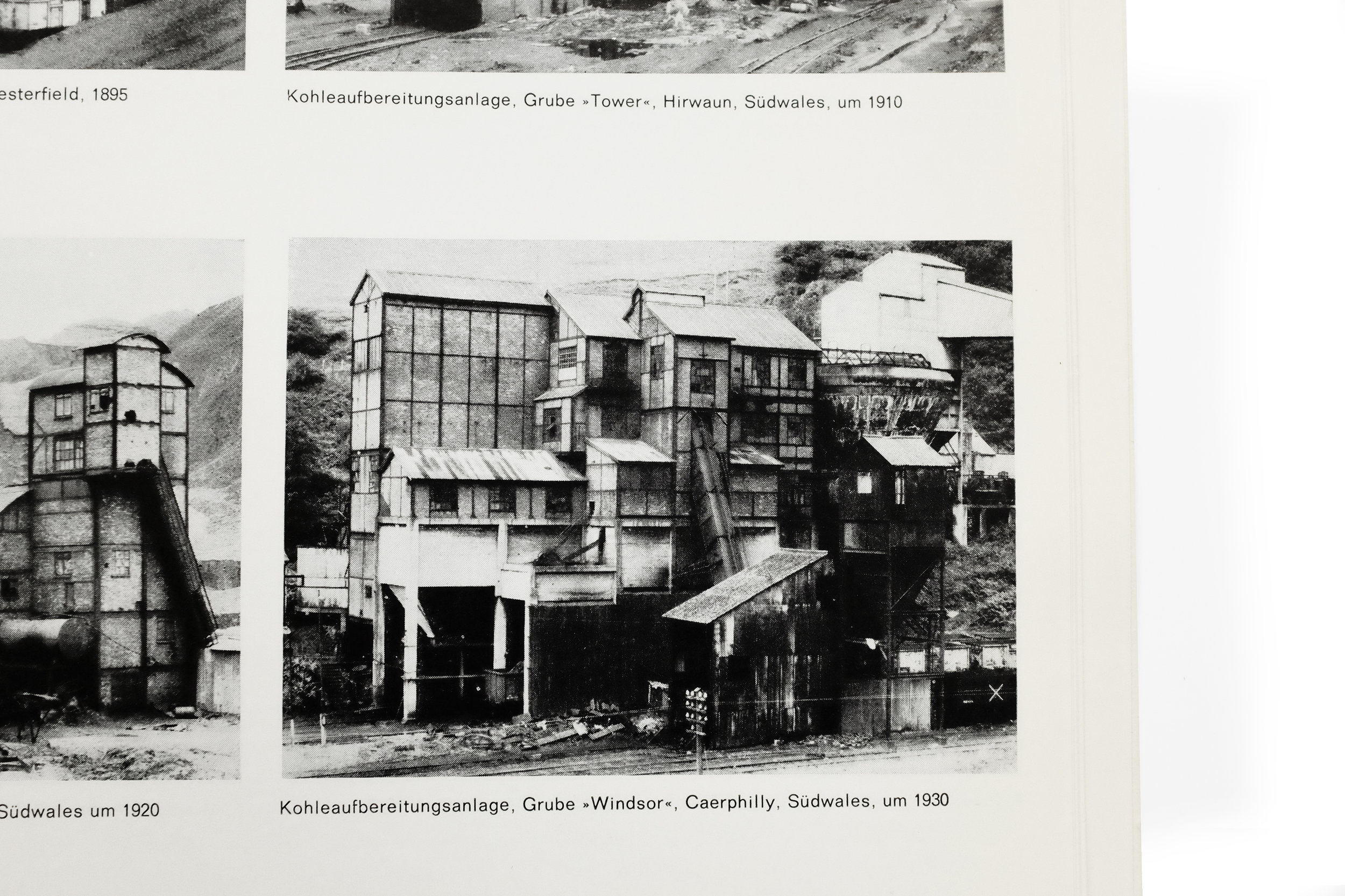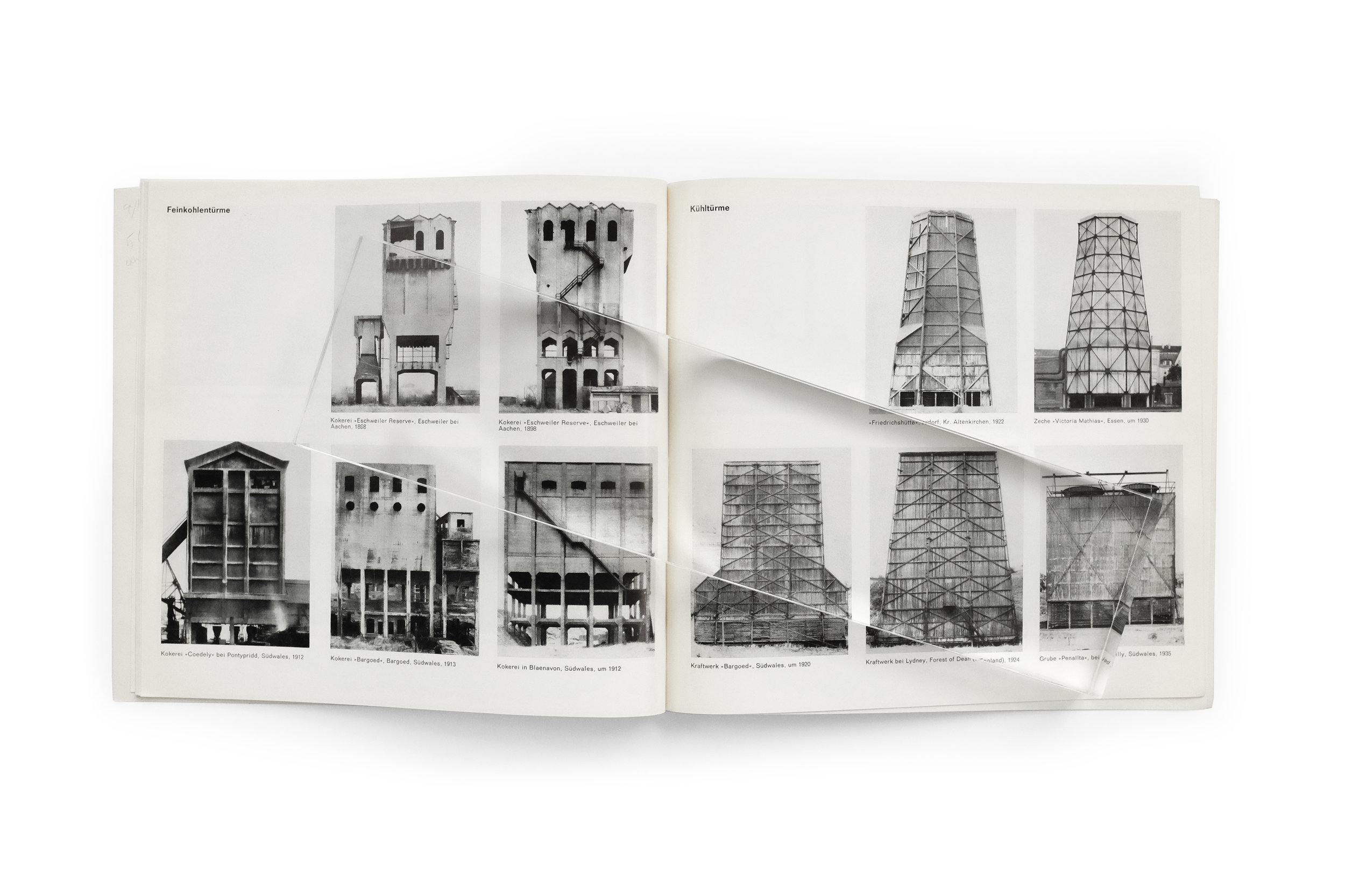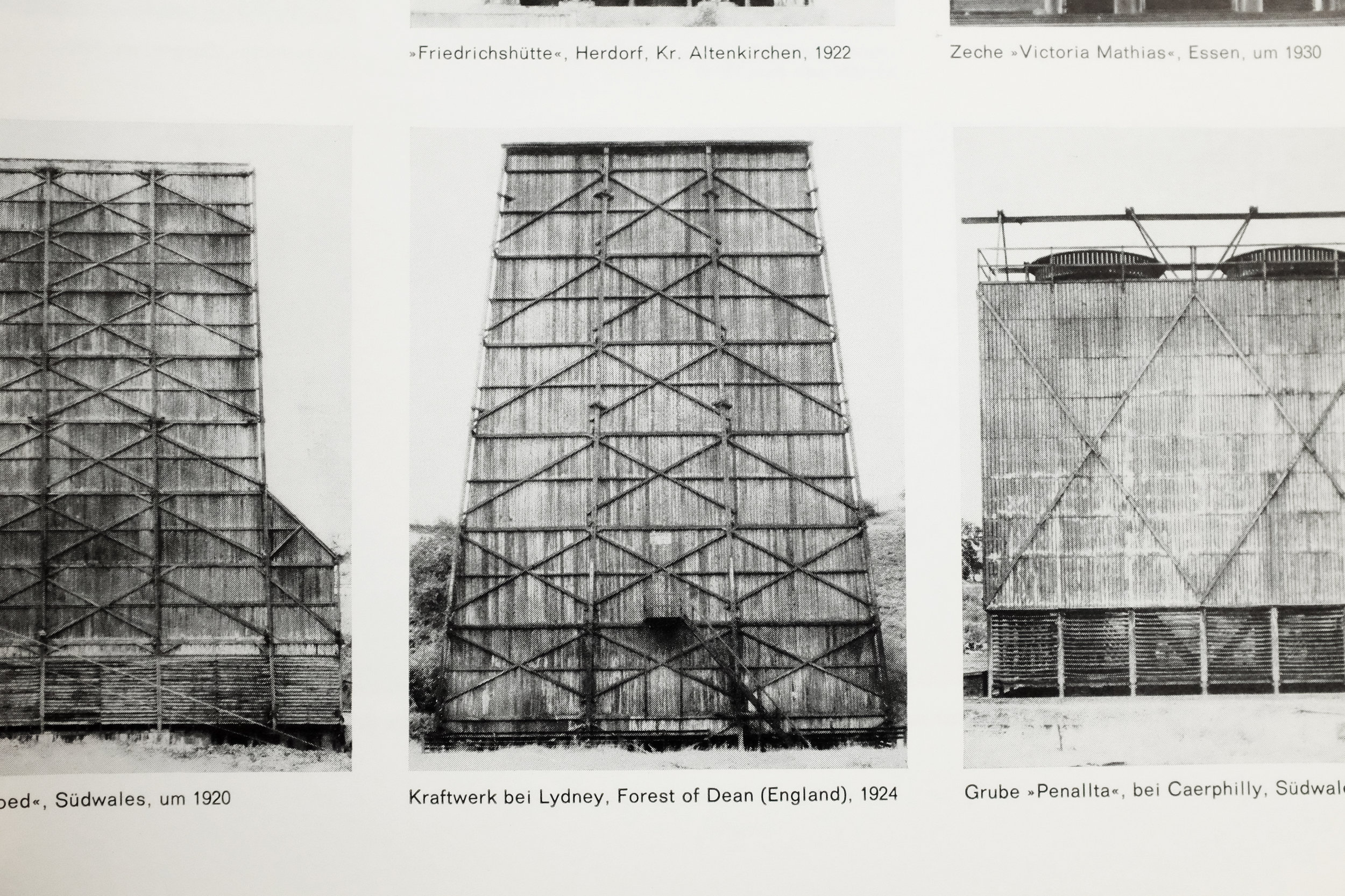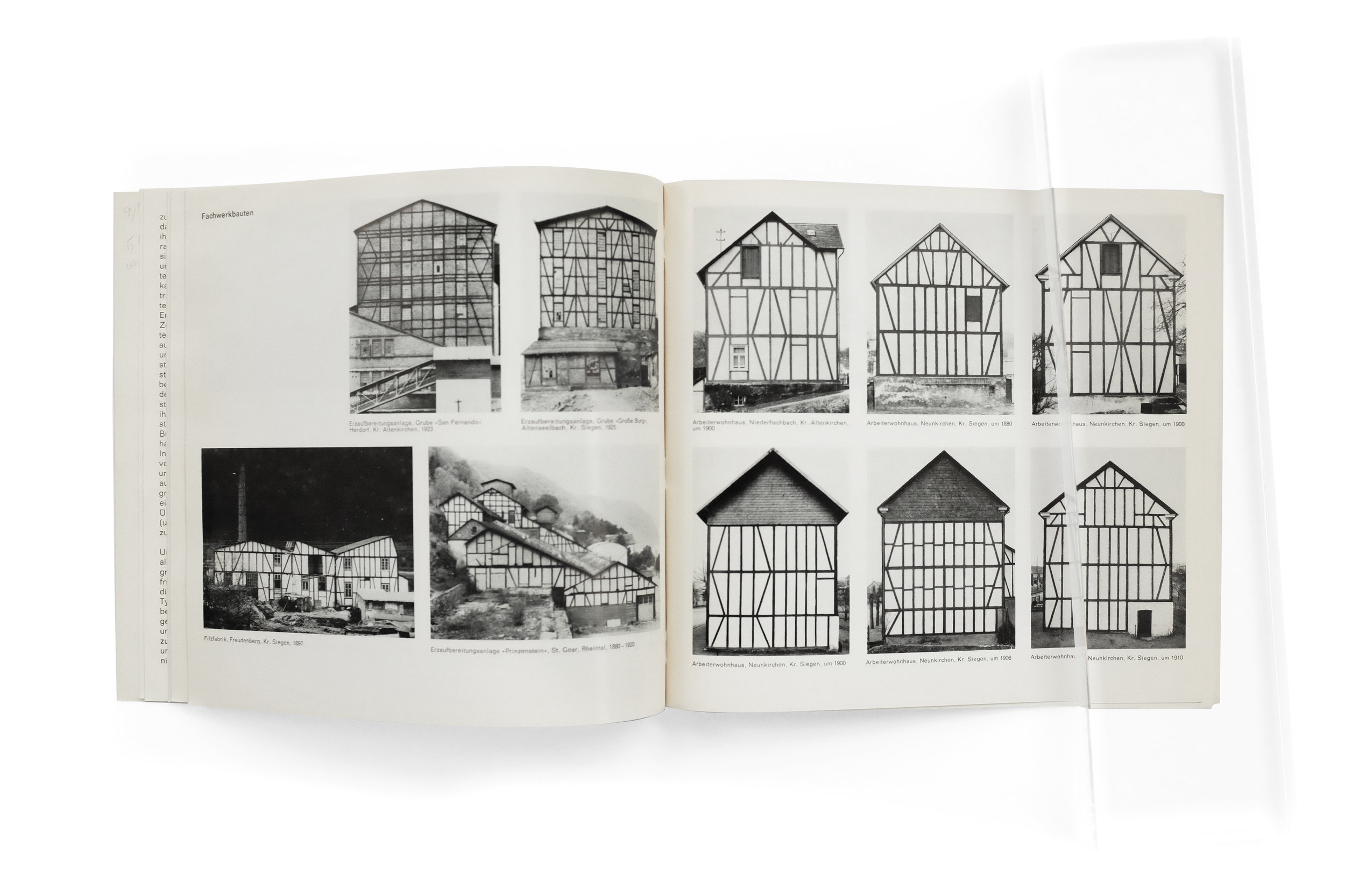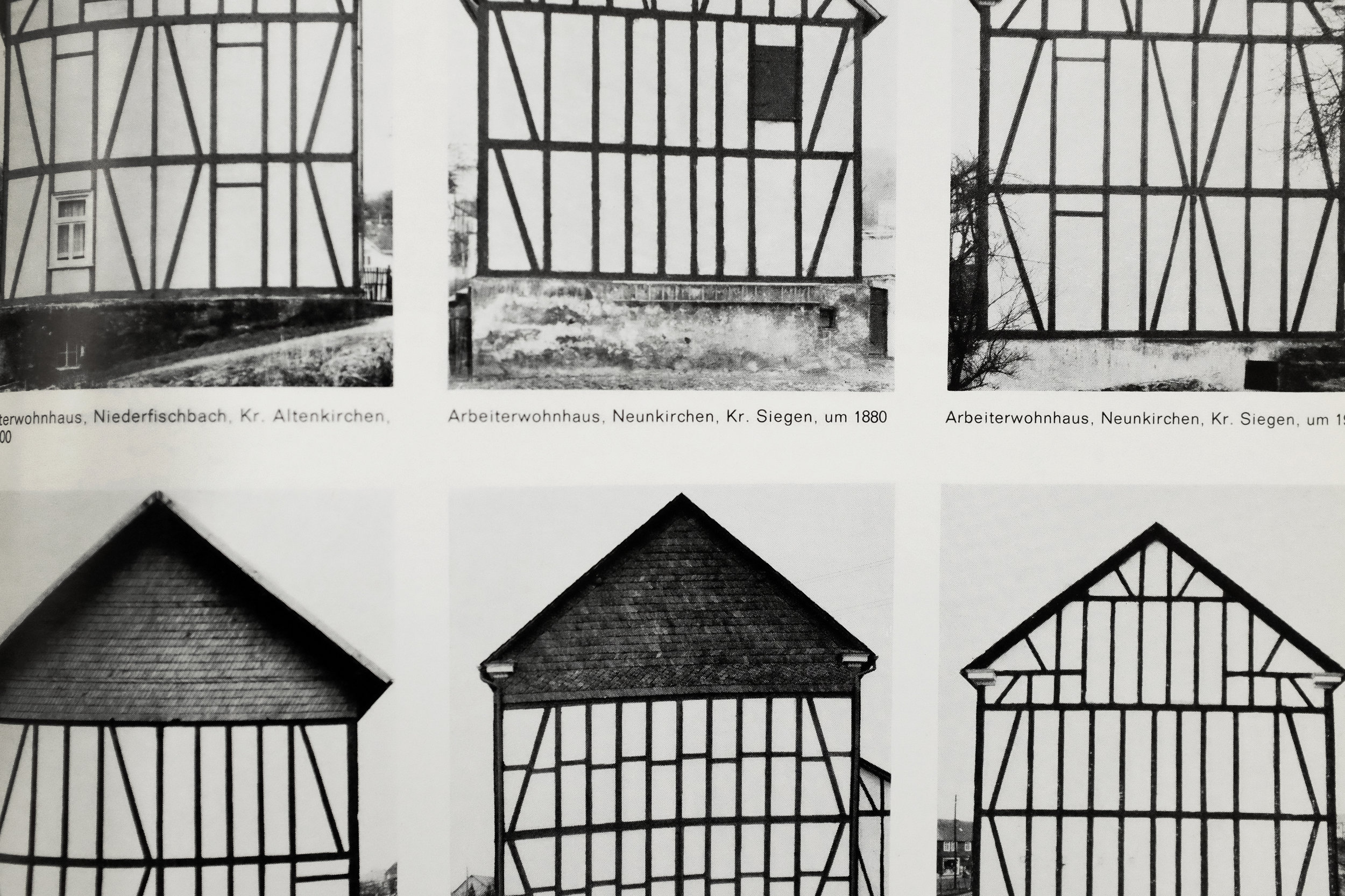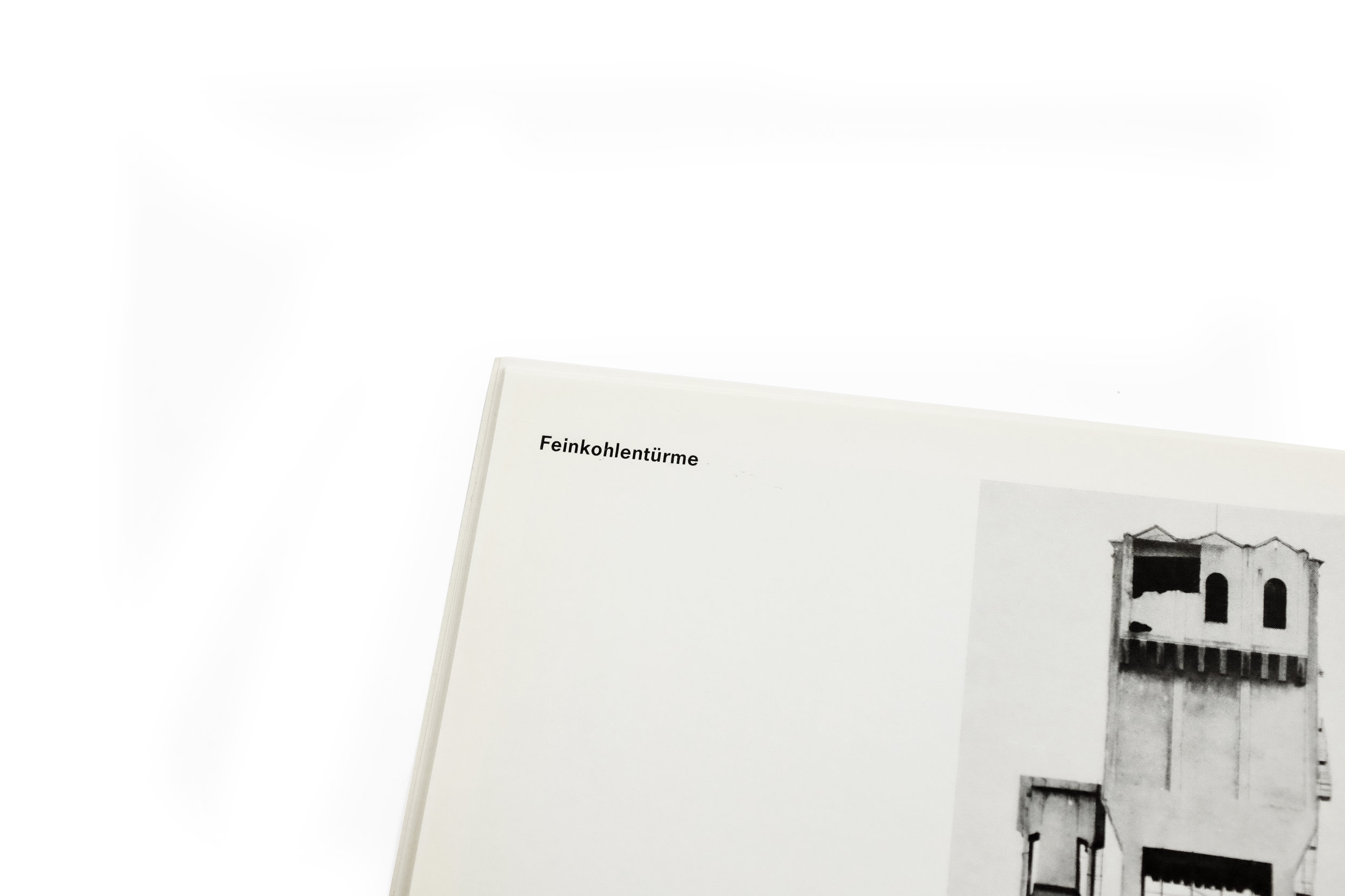Industriebauten 1830–1930
Industriebauten 1830–1930
Bernd and Hilla Becher
1967
Die Neue Sammlung
34pp.
printed in Germany
At the risk of sounding unbearably cheesy, I'll say that this book has been one of my more emotional acquisitions. The catalog is the very first book published on the photography duo Bernd and Hilla Becher, who would go on to fundamentally alter the nature of postmodern photography. Those who know me will be familiar with my respect for their work and practice. And it's a privilege to have a piece of their history, documenting their first exhibition long before they attainted their historic status.
The Bechers dedicated their lives to capturing the post-industrial landscape of Europe and later America. Where others saw worthless artifacts from a bygone era, they found beauty in the incredible invention of form stemming from practical considerations dictated by the various functions of each structure. They studied these abandoned and dilapidated buildings with undying precision and care using a rigid methodology for composing a shot. In fact, you can compare any two photos taken across the decades in which they worked and they would look exactly the same (save for improvements in the technology).
Aside from creating a massive body of inspiring work which alone sits above most in the history of modern photography, the Bechers also had a rich pedagogical career, founding the Dusseldorf School of Photography and teaching an entire generation of world-renowned artists working in the Becher's tradition of photographic objectivity such as Thomas Struth, Candida Hofer, and Andreas Gursky to name but a few.
The book itself is printed cheaply and is very brief at only 34 pages long. The design, however, is quite striking. Its cover stuns, demonstrating a remarkable sensitivity for space and type, somehow making the photograph feel larger than life. The unnamed designer does well to let the photography breathe in the upfront section of the catalog. But once the essay has concluded, the book organizes the collection of works by function, grouping like with like and allowing the viewer the ability to easily analyze and compare the architectural forms which reveal intricate variations on a theme. This indexing method has been employed by the Bechers their entire career to great effect.
Although I have nine other Becher catalogs, all featuring high-quality reproductions of their work, this tiny catalog remains my favorite. It marks a humble beginning of two incredible artists who married exceptional vision with a loving passion for their craft.


